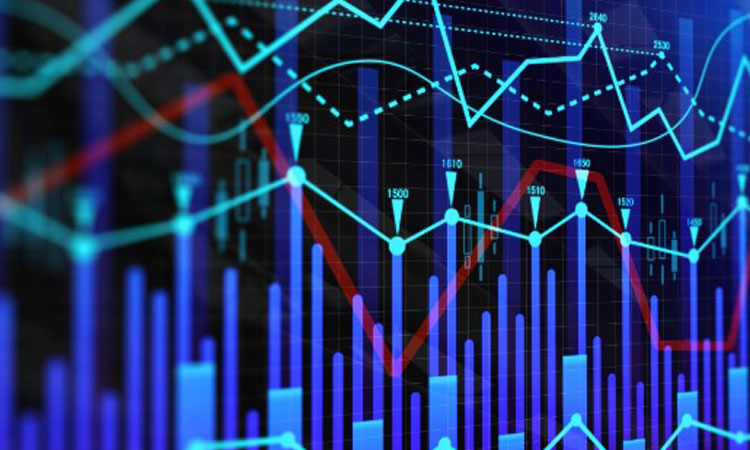What is leverage and margin in the commodity market?

Sponsored Content
Online commodity trading is becoming more and more popular, as investors and traders can buy and sell commodities directly in the spot (money) market or through derivative products such as futures, options, and contracts for difference, and this gives the trader the advantage of diversification and hedging against inflation, in addition to the possibility of increasing his returns through Use of leverage and margin system in trading.
In the beginning, the commodities market was limited to large investors who owned large capitals, which gave them good profits through the movement of commodity prices, but with the technological development and the proliferation of brokerage firms, what is now known as the leverage and margin system appeared, through which many small investors and traders were able to achieve Profits from commodities through CFDs.
What is leverage?
Leverage is an additional investment power offered by brokers to investors in the financial markets, and it is a financial loan from the broker that he gives to the investor during his investments with the aim of increasing capital, in this way the investor can generate more profits but also create more losses in the event of predicting the wrong price, therefore it is necessary to use leverage as wisely as possible.
Leverage is considered as a percentage that multiplies the invested capital. If the market goes your way, you will achieve sufficient profit. Likewise, when the market moves in the opposite direction to what you expected, you can lose a lot, so investors, especially beginners who start trading CFDs in commodities, should use leverage. Finance carefully and vigilantly.
There are several key concepts that a leveraged investor needs to know:
Margin: It is the amount required by the financial broker to cover a potential loss. Margins are usually calculated as a percentage of the value of the position.
Invested capital: the total amount of the operation.
Risk Capital: The amount of money in an investor's account that could put the operation at risk.
Stop Loss: A tool that is used to limit risky capital, the investor must define and apply a "stop loss", i.e., the price levels for which the trade is closed automatically minimizing losses.
How does leverage work in trading?
Leverage can operate with borrowed capital in the financial markets. For a trader, this means that he will be able to operate in larger volumes than he owns, and thus, can access markets that are often inaccessible.
To express leverage, a multiplier is often used which shows how many times the amount of an open position is compared to the actual amount of trader's funds used in that position.
For example: if a trader wants to make a trade with a leverage ratio of 1:10, that means he only needs 1% to open a position, with an initial deposit of $1,000 you can get borrowed money equivalent to $10,000.
For each position that the trader opens and determines the leverage, the broker determines the required margin in the form of a percentage. Margin can be considered a form of guarantee for the short-term loan that the broker lends to the investor. Margin is also considered the minimum amount that we must maintain to continue working.
Margin and leverage
Leverage and margin are two related concepts. The margin required by the broker is the money required to open a leveraged trade. To better understand the concepts of leverage and margin, let's see it with a practical example:
You want to open a position of $100,000 and your account leverage is 1:100, so your broker is asking for $1,000 from your account as margin, suppose this deal made a profit of 1% that means you will have earned $1,000 i.e., 100% of the total invested capital, If the deal loses 1%, you will lose 100% of your actual investment.
Margin is a percentage of the open leverage position, in the example we gave, the margin is 1%, both the leverage capacity and the margin are determined by your broker.
In other cases, the margin may be 0.5% of the trader's position size with 1:200 leverage, other brokers may only require 0.25% margin or 1:400 leverage.
Some brokers offer very high leverage ratios, a beginner trader can earn a lot of money with a little investment, but they can also lose everything in one trade, expert traders are not easily fooled.
Leverage is used in commodity market CFDs, where the profit or loss is the difference between the position entry price and the position closing price.
How to reduce risk when investing with leverage?
Cash management in trading is a part of investment that is responsible for studying the best way to get the highest profitability and the lowest risk, that's why this concept is also called risk management and it is one of the pillars of trading.
The main objective of trading is to make money; however, this does not mean that you should risk all your capital on every trade. Managing money wisely is the real key that separates success from failure. Many traders struggle in the beginning because they underestimate the importance of money management in Their investment strategy, that is why when they invest in leveraged markets, they put their capital at risk.
It is important that you define risk levels in advance so as not to lose your trading account in one day. The risk ratio of 1% -2% per trade is a good compromise between risk and capital preservation, as it allows you to earn more on profitable trades and preserve your capital. money during periods of loss.
Advantages of leverage
In the first place, financial leverage allows investors to obtain more capital, as the investor pays a percentage of the total deal and the rest is borrowed, and if leverage is used well, the investor can achieve a large return that is higher than direct participation.
In addition, leverage allows investors the ability to acquire expensive financial assets that they otherwise would not be able to obtain.
There are many advantages, but to get benefits with leverage, we must have a previous base and good training in this matter, in addition to working for a period in the demo account to practice trading and learn to use leverage and make good money management.
Disadvantages of leverage
While more leverage can be beneficial, it can also work against the investor and multiply their losses. If the market moves in the opposite direction than desired, you could lose more money than was originally invested and could go into debt. That is why the investor should study leveraged trading carefully to reduce the risks.
It is important to remember that leveraged trading involves risk and therefore you can lose your investment by trading with high leverage.
The most recommended thing is to avoid the level of high leverage until you have enough experience in the world of trading, the demo stage and virtual trading will help you learn to use trading tools such as leverage, once you gain the necessary experience you will be able to put everything you learned into practice in a real trading account.



